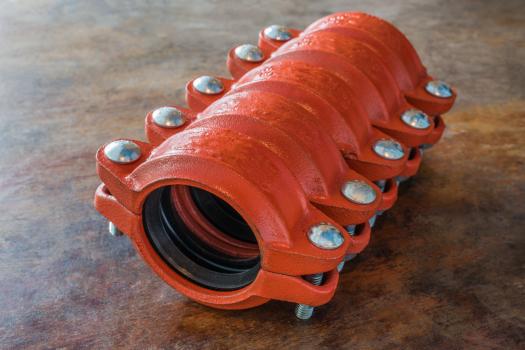Document Automation
Victaulic “We reduced time spent on order entry by 85% through document automation"

Victaulic – a world leader in pipe joining solutions
Victaulic is a global manufacturer of mechanical pipe joining solutions, flow control systems, and fire protection installations. It`s products are used in some of the world’s most demanding markets and for some of the most challenging piping applications. From the World’s tallest building (Burj Khalifa), to mining at extreme depths and offering tools to extinguish extreme fires, Victaulic plays an essential role.
With 4,000+ employees worldwide in more than 50 locations, and hundreds of partners and customers, Victaulic has a diverse and complex communication flow. For Victaulic therefore, business-to-business integration has become a necessity. An integration also that is central in its constant striving for maximum efficiency, shorter time to market, decreased operational cost and a high level of customer intimacy.
Witness to the success of this strategy is the EDI automation already set up between Victaulic and its partners through Montova. In the order process, for example, a good part of the orders are entered via EDI and managed in a fully automated flow.

The challenge: order entry is manual, time-consuming, error-prone
Before starting automation, a major part of Victaulic’s customer orders entered the company in non-automated ways. Customers sent orders, e.g., as PDF or Excel files via various e-mail addresses.
As a result, the customer service employees at Victaulic spent a lot of time doing data entry, a costly and time-consuming work for people who might otherwise engage in value-adding interactions. In addition, the manual entry of orders slowed down the response time, and in the end also the invoice and payment time.
Due to the manual entry, inevitably errors and inconsistencies crept into the orders. Because the process was not automated, it proved very hard and time-consuming to find out where an error had occurred and how it could be corrected. So there also was a lack of transparency.

The Montova solution: automated order flow
The Montova solution collects all orders in a central mailbox in the cloud. Next, the PDF and Excel files are transformed to digital data and translated into the Victaulic format.
The result is a complete collection of digital orders, including those that were formerly non-automated. All the orders can now be managed equally, as they flow as EDI messages through the system.
The Montova portal offers a full, transparent view of all flows and documents. All the original customer documents are stored alongside the Victaulic formats, so not a shred of information gets lost or becomes untraceable.

Whenever someone in Victaulic, in service or commercial functions, wants to look up information, they can do so themselves, without having to rely on IT or other service resources.
A major consequence is that the customer service personnel can now focus on more strategic, value-adding tasks. They no longer have to enter and reenter orders, resolve order queries, or go dig for apparent inconsistencies.
When customers switch their order format, from say PDF documents to EDI exchanges, it’s only a small step for Victaulic. They are already onboard in the Montova solution, and just a small adaption to the entry channel is needed. All the remaining flows have already been set up to be as transparent and efficient as possible.
''Today, we have our order flows automated with EDI and PDF to EDI and we are now looking to expand and improve the automation every time we onboard a new customer”
Maximized automation for Victaulic
Montova started with automating the PDF order flow in our EMEAI region, where medium size customers still use a lot PDF Purchase Orders. After a successful implementation in Europe, we implemented in South-Korea, a country where 20 customers accounted for 75% of the order volume.
As a result, we managed to decrease the time spent on order entry by 85%, with a very low error rate. With that, our customer service people could focus again on what they do best.
